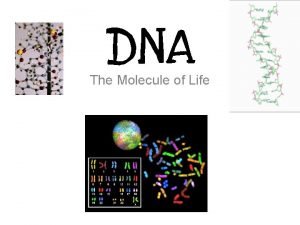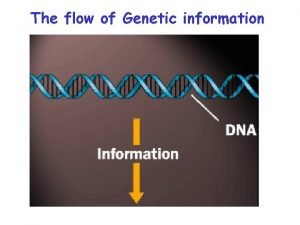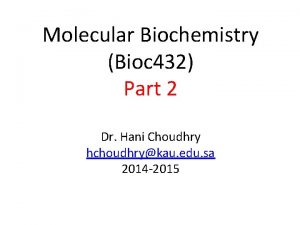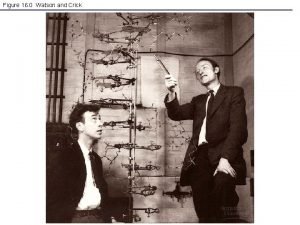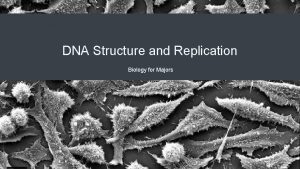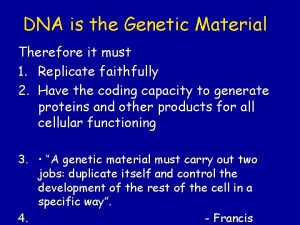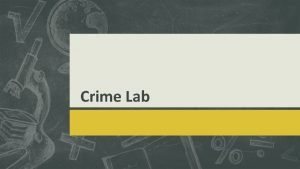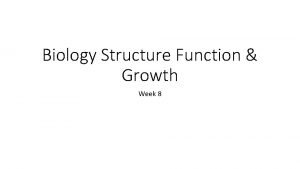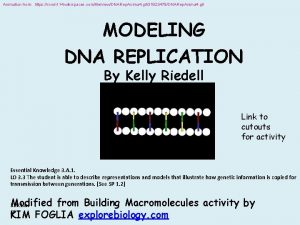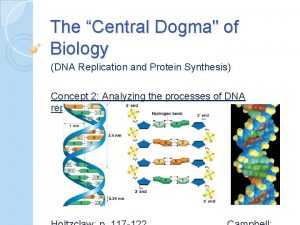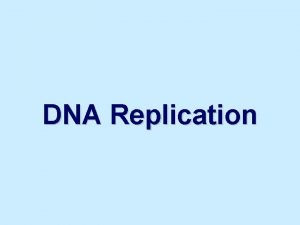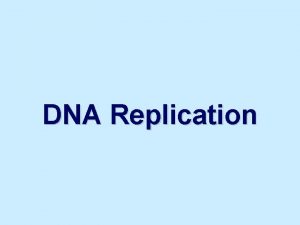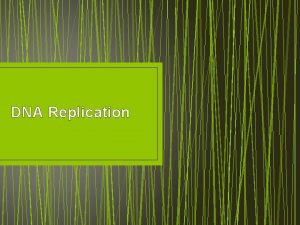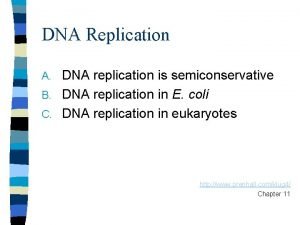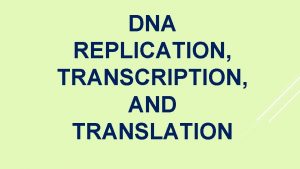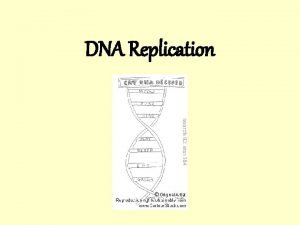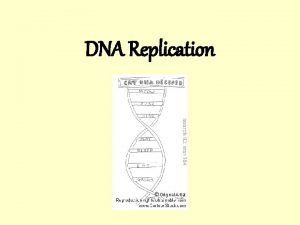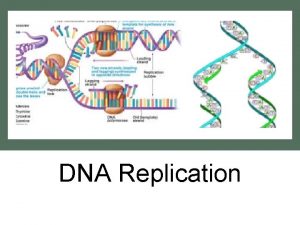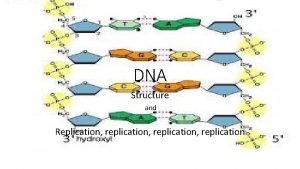DNA Replication Needed only when a cell is
















- Slides: 16

DNA Replication • Needed only when a cell is about to divide • S phase of cell cycle prior to mitosis or meiosis NO OTHER TIME!!!

Semi-Conservative Replication • Thought most likely mode • contrast w/ conservative and dispersive • Meselson and Stahl • density-gradient centrifugation Cesium chloride

Meselson and Stahl • Produced E. coli with “heavy” DNA • nitrogens were 15 N (extra neutron) • Allowed E. coli to replicate using normal 14 N • Examined how chromosomes separated in gradient

15 N alone 14 N alone semi cons. x x cons. dispers.

15 N alone 14 N alone semi-conservative x x dispersive

15 N alone 14 N alone 1 st replication 2 nd replication

DNA Replication • Bi-directional • must add to 3’ end • Discontinuous • Okazaki fragments • (Multiple origins of replication - euk. ) • Enzyme catalyzed

• Phosphodiester bond “nicked” • nuclease • Helix unwinds • helicase • (topoisomerase) • torsion stress causes H bonds between bases to break • 2 strands separate • single strand binding proteins

• RNA primer • need free 3’ end • RNA primase • removed later • DNA polymerase III • catalyzes phosphodiester bonds between new nucleotides • proofreads • DNA polymerase I • removes/replaces RNA primers • DNA ligase • seals Okazaki fragments

5’ T A LAGGING STRAND G G helicase C Okazaki fragment A 5’ A A RNA primer G G C A C 5’ U T A 3’ C A G C G A T C G G A C A A C T A G C C T G T T DNA polymerase LEADING STRAND

5’ 3’ 5’ lagging strand discontinuous replication Okazaki fragments 5’ 3’ leading strand continuous replication

5’ Polymerase I; ligase 3’ 5’ Okazaki fragments 5’ 3’


Leading vs. lagging. . . lagging leading 3’ 5’ 5’ 3’ leading lagging

Two identical chromatids

Replication • One DNA molecule replicates to form two identical molecules • One chromosome two identical chromatids
 Bioflix activity dna replication lagging strand synthesis
Bioflix activity dna replication lagging strand synthesis Replication
Replication Dna rna protein synthesis homework #2 dna replication
Dna rna protein synthesis homework #2 dna replication Haploid vs diploid
Haploid vs diploid Dna replication steps
Dna replication steps Dna replication is semi-conservative
Dna replication is semi-conservative 5 enzymes responsible for dna replication
5 enzymes responsible for dna replication Polyribosomes
Polyribosomes Dna structure and replication packet answer key
Dna structure and replication packet answer key Major enzymes in dna replication
Major enzymes in dna replication Antiparallel in dna replication
Antiparallel in dna replication Dna replication jeopardy
Dna replication jeopardy Dna replication fork
Dna replication fork Missy baker
Missy baker What process
What process Nucleoside triphosphate in dna replication
Nucleoside triphosphate in dna replication Bioflix dna replication
Bioflix dna replication




